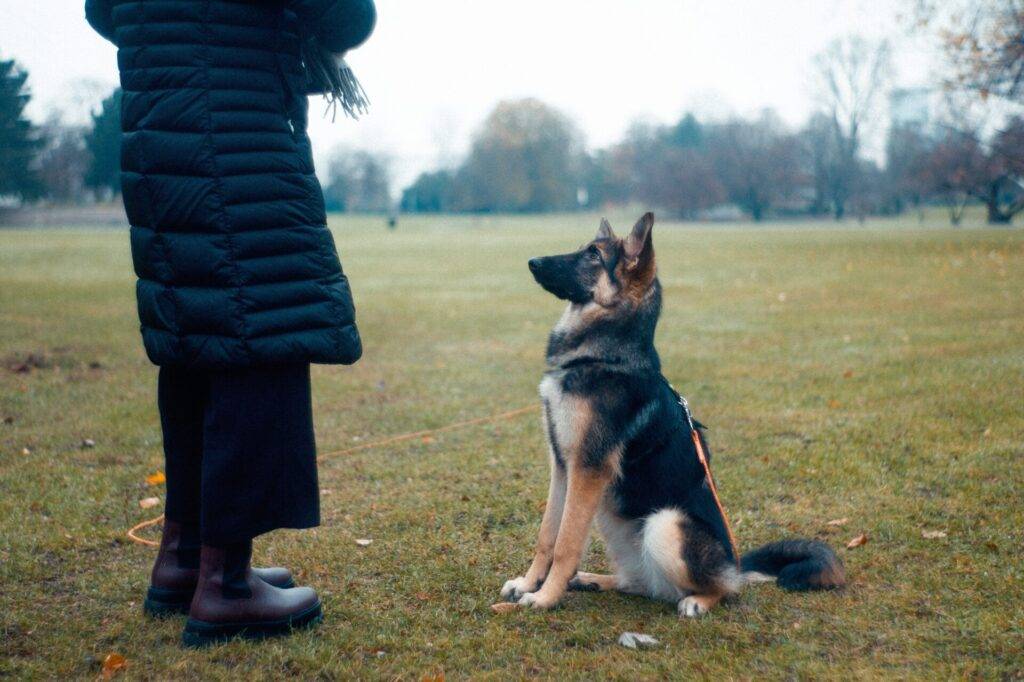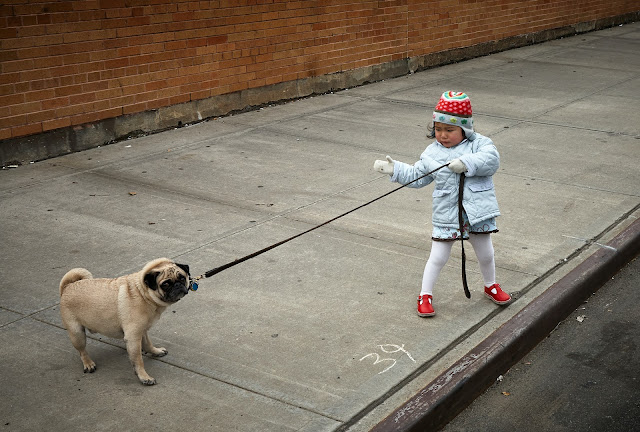The Benefits of Clicker Training for Dogs: Unlocking Their Full Potential

Clicker training for dogs: This method has gained popularity among pet owners, and for good reason. Clicker training not only enhances your bond with your dog but also makes training sessions enjoyable. It’s a positive reinforcement method that promises efficiency and ease. In the next sections, you’ll understand why it’s a leading choice for dog training. No matter the age or breed of your dog, this tried-and-true method could be the key to their best behavior.
The Benefits of Clicker Training for Dogs: What is Clicker Training?
Understanding the Basics of Clicker Training
Have you ever wondered how professional dog trainers manage to teach their furry friends a wide range of tricks and behaviors? One highly effective method they employ is clicker training. Clicker training is a positive reinforcement technique that uses a handheld device, known as a clicker, to mark desired behaviors in dogs. This method has gained popularity among both professional trainers and dog owners alike due to its simplicity and effectiveness.
Clicker training is based on the principles of operant conditioning, a theory developed by renowned psychologist B.F. Skinner. According to this theory, animals learn through a process of associating behaviors with their consequences. In the case of clicker training, a dog learns to associate the sound of the clicker with receiving a reward, usually in the form of a treat or praise.
The Science Behind Clicker Training
Clicker training utilizes a concept known as “clicker bridging.” When a dog performs a desired behavior, such as sitting or lying down, the trainer immediately marks the behavior by pressing the clicker, creating a distinct sound. This sound serves as a bridge between the behavior and the eventual reward.
The clicker acts as a conditioned reinforcer, meaning that it gains significance through its association with the primary reinforcer (the treat or praise). Over time, the clicker itself becomes a powerful motivator for dogs, as they learn to associate the sound with the anticipation of a reward. This process is known as classical conditioning.
By precisely timing the click to mark the desired behavior and following it with a reward, clicker training helps dogs understand exactly what they did right. This clarity enhances their learning experience and speeds up the training process. Dogs quickly learn to offer the desired behaviors more frequently in order to earn the reward.
In addition to its effectiveness, clicker training also has a positive impact on the bond between dogs and their owners. The use of positive reinforcement methods fosters a trusting and cooperative relationship based on mutual understanding. Dogs become enthusiastic learners, eagerly offering new behaviors in anticipation of the click and reward.
The Benefits of Clicker Training for Dogs
Enhanced Communication and Bonding
One of the key benefits of clicker training for dogs is enhanced communication and bonding between the owner and their furry friend. When using a clicker, it becomes a clear and concise signal to the dog that they have performed the desired behavior correctly. This instant feedback helps establish a strong line of communication, allowing the dog to understand what is expected of them.
Through this positive reinforcement, dogs learn to associate the click sound with a reward, whether it’s a tasty treat or a pat on the head. This reinforcement strengthens the bond between the owner and the dog, building trust and mutual understanding.
Effective Training Tool for All Ages and Breeds
Clicker training is not limited by age or breed, making it an effective training tool for dogs of all sizes and backgrounds. Whether you have a playful puppy or a mature dog, clicker training can be adapted to suit their individual needs.
The simplicity of the clicker training method allows for easy customization based on the dog’s abilities and learning pace. It can be used to teach basic commands, such as sit or stay, as well as more complex tricks or obedience exercises.
Positive Reinforcement and Motivation
Clicker training relies on positive reinforcement, which is a powerful motivator for dogs. Instead of using punishment or correction-based methods, clicker training focuses on rewarding desired behaviors.
By rewarding the dog immediately after it performs the desired behavior and clicking at the precise moment, the dog understands exactly what it did right. This positive experience motivates them to repeat the behavior in order to receive another reward.
Clear and Consistent Commands
Consistency is crucial when it comes to training dogs, and clicker training helps establish clear and consistent commands. The sound of the clicker becomes a consistent marker for the desired behavior, making it easier for the dog to understand what is expected of them.
With clicker training, the dog learns to associate the click sound with a reward, which helps eliminate confusion and ambiguity. This clarity in communication allows for faster and more effective training sessions.
Versatility and Adaptability
Another advantage of clicker training is its versatility and adaptability to different training scenarios. Whether you’re teaching your dog basic obedience, advanced tricks, or even addressing behavior issues, the clicker can be used across various training contexts.
The clicker can be easily paired with other training methods or combined with verbal cues to reinforce learning. This adaptability makes clicker training a valuable tool for dog owners, trainers, and even those participating in dog sports or competitions.
How to Get Started with Clicker Training
So, you’ve heard about the benefits of clicker training for dogs and you’re ready to give it a try. Congratulations! Clicker training is a positive and effective method that can help you build a strong bond with your furry friend while teaching them new skills. In this section, we’ll guide you through the essential steps to get started with clicker training.
Choosing the Right Clicker
The first step in clicker training is to choose the right clicker for you and your dog. Clickers come in various shapes and sizes, but the most important factor is that they produce a distinct and consistent sound. You want a clicker that is comfortable to hold and easy to use. Some clickers even have a wrist strap, which can be handy during training sessions. Remember, the clicker will serve as a signal to your dog that they have done something right, so make sure it’s a sound they can easily differentiate from other noises.
Setting Clear Training Goals
Before you start training, it’s essential to set clear goals. Determine what behaviors or skills you want to teach your dog through clicker training. Whether it’s basic obedience commands like sit, stay, or more advanced tricks like roll over or high-five, having a clear idea of what you want to achieve will help you stay focused and measure your progress. Remember, it’s important to start with achievable goals and gradually work your way up to more complex tasks.
Establishing a Reward System
In clicker training, rewards play a crucial role in motivating your dog and reinforcing desired behaviors. Decide on a reward system that works best for your dog. It can be food treats, verbal praise, or a combination of both. Make sure the rewards are something your dog finds highly appealing. Treats should be small, soft, and easy to consume quickly to avoid interrupting the flow of training. Verbal praise should be enthusiastic and accompanied by gentle pets or belly rubs. The key is to make your dog associate the clicker sound with something positive and rewarding.
Basic Clicker Training Techniques
Now that you have the right clicker, clear goals, and a reward system in place, it’s time to start clicker training your dog. Here are some basic techniques to get you started:
- Charging the clicker: Before using the clicker in training, you need to “charge” it to create a positive association for your dog. Simply click the clicker and immediately follow it with a treat or praise. Repeat this several times until your dog starts to expect a reward whenever they hear the click.
- Click and treat: Choose a behavior you want to reinforce, such as sitting. Wait for your dog to perform the behavior, then immediately click the clicker and give it a treat. The clicker acts as a marker, signaling to your dog that they have done the right thing. Repeat this process consistently, gradually adding verbal cues to the behavior.
- Shaping: Shaping involves breaking down complex behaviors into smaller steps and rewarding your dog for each incremental step. For example, if you want to teach your dog to roll over, start by rewarding them for lying on their side, then for rolling onto their back, and finally for completing the full roll. Be patient and reward even the slightest progress to encourage your dog’s learning.

Common Challenges and Troubleshooting Tips
Overcoming Fear or Anxiety
One common challenge that dog owners may encounter during clicker training is dealing with fear or anxiety in their furry companions. Just like humans, dogs can also experience apprehension or nervousness when faced with new experiences or unfamiliar stimuli. Fortunately, there are a few strategies that can help you overcome this hurdle and create a positive training environment for your canine friend.
1. Gradual Exposure: Start by introducing your dog to the clicker in a calm and controlled environment. Begin with short training sessions and gradually increase the duration as your dog becomes more comfortable. This gradual exposure will help build trust and reduce anxiety.
2. Counterconditioning: If your dog associates the clicker sound with negative experiences, you can try counterconditioning. Pair the clicker sound with something your dog loves, such as treats or playtime. This will help create a positive association and alleviate any fear or anxiety.
3. Patience and Reinforcement: Be patient with your dog and provide plenty of positive reinforcement. Use treats, praise, and affection to reward your dog for their progress. Celebrate small victories along the way to boost their confidence and motivation.
Dealing with Distractions
When training your dog with a clicker, distractions can pose a significant challenge. Dogs are naturally curious creatures, and their attention can easily wander, especially when there are enticing sights, sounds, or smells around. Here are a few tips to help you navigate this obstacle and keep your dog focused on the training session.
1. Start in a Controlled Environment: Begin training in a quiet, distraction-free area where your dog can concentrate. As your dog becomes more adept at clicker training, gradually introduce distractions in a controlled manner to build their ability to focus amidst distractions.
2. Increase the Value of Reinforcement: Use high-value treats or rewards during training sessions to grab your dog’s attention and keep them engaged. Find out what motivates your dog the most and use it as a powerful tool to combat distractions.
3. Use a Cue to Regain Focus: Teach your dog a cue, such as “focus” or “watch me,” to redirect their attention back to you when distractions arise. Pair this cue with the clicker and reward your dog for responding to it. With practice, your dog will learn to shift their focus back to you when needed.
Addressing Clicker Confusion
Clicker confusion can occur when your dog doesn’t understand the association between the clicker sound and the desired behavior. This confusion can lead to frustration, both for you and your dog. To effectively address clicker confusion, consider the following tips:
1. Revisit the Basics: Go back to the basics of clicker training and ensure that your dog understands the fundamental concept. Start with simple behaviors that your dog is familiar with and reinforce them using the clicker. This will help reinforce the connection between the clicker sound and the desired response.
2. Clear Timing and Consistency: Clicker training relies on precise timing and consistency. Make sure you click the moment your dog performs the desired behavior, followed by a reward. Consistency in your approach will help your dog understand the correlation between the clicker sound and the positive reinforcement.
3. Seek Professional Guidance: If you’re still facing challenges with clicker training, don’t hesitate to seek professional guidance from a certified dog trainer. They can provide you with personalized advice and techniques to address specific issues your dog may be facing.
Advanced Clicker Training Techniques
In the world of dog training, clicker training has gained immense popularity due to its effectiveness and positive reinforcement approach. While basic clicker training can teach dogs simple commands and behaviors, advanced clicker training techniques take it a step further and enable pet owners to shape complex behaviors, engage in target training and agility activities, and even train their dogs for specific tasks. Let’s explore these advanced clicker training techniques in detail.
Shaping Complex Behaviors
Shaping complex behaviors is an advanced clicker training technique that involves breaking down a desired behavior into small, incremental steps. Through the use of the clicker, you can communicate to your dog that they are on the right track and reinforce each small step they take towards the final behavior. This method allows for creativity and flexibility in training, as it encourages dogs to think for themselves and experiment with different behaviors until they achieve the desired outcome.
For example, if you want to teach your dog to close a drawer, you can start by rewarding them for touching the handle, then progress to pulling it slightly, and finally closing it fully. By rewarding each successful attempt, your dog will learn to associate the clicking sound with the desired behavior, making the learning process both engaging and effective.
Target Training and Agility
Target training is another advanced clicker training technique that can be used in various activities, such as agility training. It involves teaching your dog to touch a particular target, such as a hand-held target stick or an object. By guiding your dog to touch the target and clicking at the right moment, you can shape their behavior and teach them to perform complex movements and agility exercises.
In agility training, clicker training can be particularly useful in teaching dogs to navigate obstacle courses, perform jumps, weave through poles, and much more. The precision and timing of the clicker provide immediate feedback to your dog, helping them understand which actions are correct and reinforcing their efforts.
Clicker Training for Specific Tasks
Advanced clicker training techniques can also be applied to train dogs for specific tasks that go beyond basic obedience commands. Whether you want your dog to retrieve specific objects, assist with household chores, or even perform tricks for entertainment, clicker training can help you achieve these goals.
By breaking down the desired task into smaller actions and using the clicker to mark and reinforce each step, you can gradually shape your dog’s behavior until it can perform the entire task flawlessly. This method allows dogs to understand complex instructions and actively participate in problem-solving, making the training process enjoyable for both the pet owner and the dog.
Conclusion
In conclusion, clicker training offers numerous benefits for dogs and their owners. This positive reinforcement training method helps to establish clear communication between the dog and the trainer, making it easier to teach and reinforce desired behaviors. By using a clicker and treats, dogs quickly learn to associate the sound of the clicker with a reward, making training sessions more effective and enjoyable.
Clicker training also focuses on rewarding good behavior rather than punishing bad behavior, creating a positive and encouraging training environment. This method helps to build a strong bond between dogs and their owners, as it promotes trust, respect, and mutual understanding. Furthermore, clicker training can be used to teach a wide range of commands and tricks, allowing dogs to develop their mental and physical abilities.
One of the notable advantages of clicker training is its ability to enhance dogs’ problem-solving skills and mental stimulation. By engaging their minds and challenging them to think, dogs become more attentive, focused, and eager to learn. Additionally, clicker training can be effective for dogs of all ages and breeds, making it a versatile training approach.
FAQ:
Are you interested in getting started with clicker training for your dog? In this section, we will address some frequently asked questions to help you gain a better understanding of this training technique. Let’s dive in!
What is clicker training?
Clicker training is a positive reinforcement method that uses a small handheld device called a clicker to mark and reinforce desired behaviors in dogs. The clicker emits a distinct clicking sound that serves as a clear and consistent signal for the dog.
How does clicker training work?
Clicker training works by associating the sound of the clicker with a reward. When your dog performs a desired behavior, you immediately click the clicker and follow it with a treat or praise. Over time, the dog learns to associate the click with the reward, and the click itself becomes a powerful motivator.
Why is clicker training effective?
Clicker training is highly effective because it allows for precise timing and clear communication with your dog. The clicker provides instant feedback, letting your dog know exactly what behavior earned them the reward. This helps them understand and repeat the desired actions more quickly.
Can any dog be trained with a clicker?
Yes, clicker training can be used with any dog, regardless of breed, age, or previous training experience. It is a versatile training method that can be tailored to suit individual dogs’ needs and abilities.
Is clicker training suitable for all types of behaviors?
Clicker training is particularly effective for teaching new behaviors, shaping complex actions, and reinforcing obedience commands. It can be used to address a wide range of behaviors, from basic commands such as sit and stay to more advanced tricks and agility training.
Can clicker training be used for behavior modification?
Absolutely! Clicker training can also be used for behavior modification. By reinforcing desired behaviors and ignoring or redirecting unwanted behaviors, you can effectively shape your dog’s behavior over time. It is a positive and humane approach to addressing behavioral issues.
What are the benefits of clicker training?
Clicker training has numerous benefits. Firstly, it strengthens the bond between you and your dog, as it relies on positive reinforcement and clear communication. It also promotes mental stimulation, as dogs need to think and learn in order to earn the click and reward. Additionally, clicker training can be a fun and enjoyable experience for both you and your furry friend.
How long does it take to see results with clicker training?
The speed at which you see results with clicker training depends on various factors, such as your dog’s temperament, prior training experience, and the complexity of the behavior you are trying to teach. However, many dogs start responding to clicker training within a few sessions, and with consistent practice, you can achieve significant progress over time.







